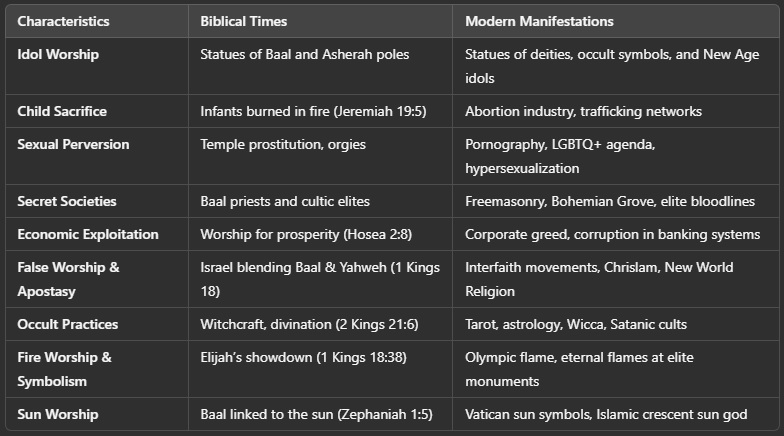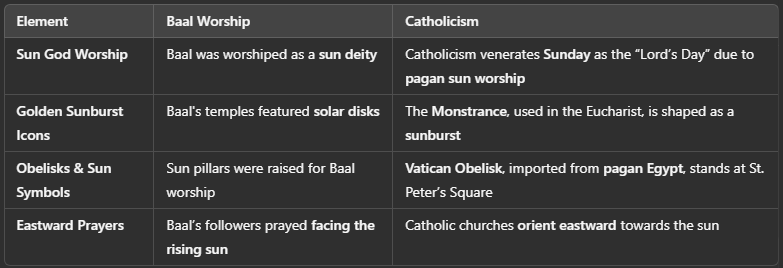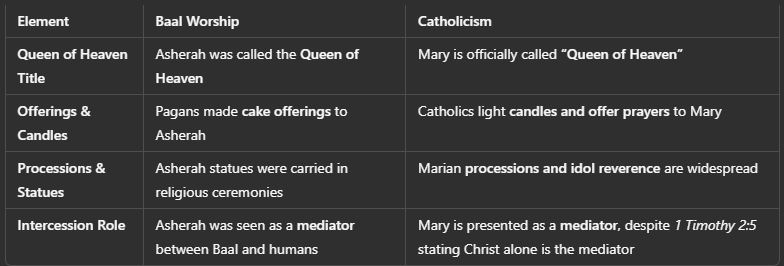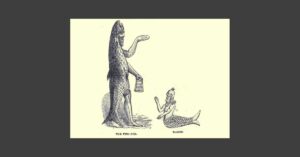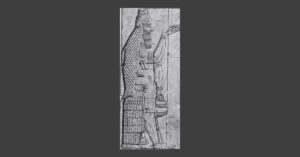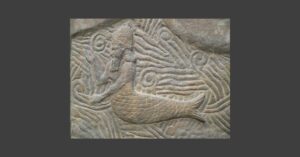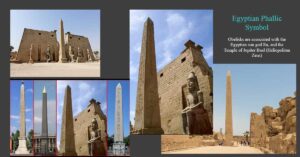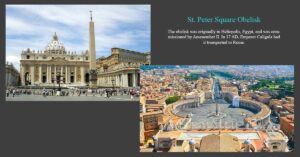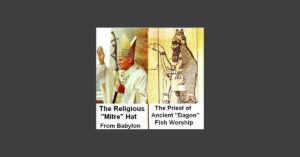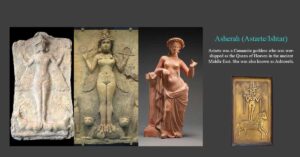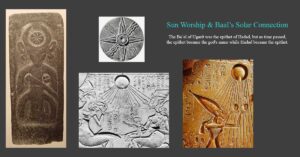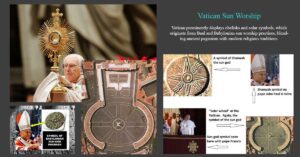Baal Worship in the Bible – Origins, Idolatry, and End-Time Warnings
Baal worship is one of the most infamous forms of idolatry mentioned in the Bible. It was a dominant religious system in the ancient Canaanite and Phoenician cultures, often leading Israel into spiritual corruption. Baal, meaning “lord” or “master”, was a fertility god associated with storms, agriculture, and prosperity. Worshiping Baal involved sacrifices, sexual immorality, and apostasy against the true God.
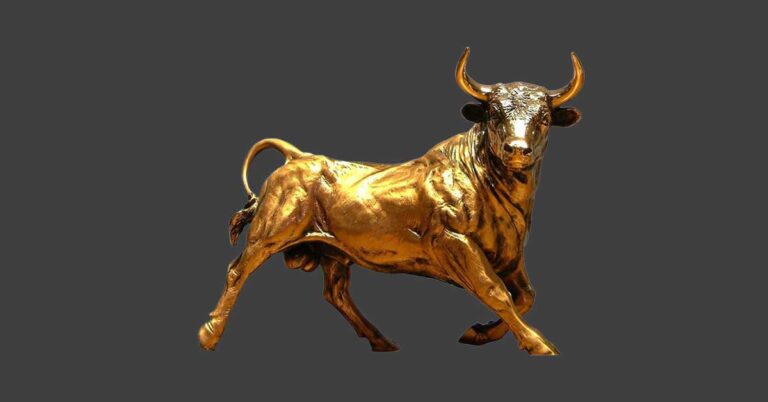
The origins of Baal worship trace back to Mesopotamian and Canaanite religious systems, where he was one of the primary deities.
📜 Earliest Mentions: Baal was worshiped as early as the Bronze Age (3300–1200 BC).
📜 Phoenician Influence: The Phoenicians spread Baal worship throughout the Mediterranean.
📜 Biblical Oppression: Israel constantly struggled with Baal worship due to its influence from surrounding nations (Judges 2:11-13).
First Mention in Scripture
The first biblical mention of Baal worship occurs in Judges 2:11-13:
“And the children of Israel did evil in the sight of the LORD, and served Baalim: And they forsook the LORD God of their fathers… and followed other gods, of the gods of the people that were round about them.”
This passage shows how Israel repeatedly abandoned Yahweh for Baal, leading to divine judgment.
Fingerprint of Baal Worship (Then & Now)
Baal worship was more than idol statues; it was a system of occultic rituals, human exploitation, and rebellion against God. The following characteristics defined
Baal worship in the Bible and persist today in hidden and public forms:
Frequency in Scripture
The name “Baal” appears over 90 times in the King James Bible (KJV), often in relation to idolatry, judgment, and apostasy.
Notable Verses:
📖 1 Kings 18:21 – “How long halt ye between two opinions? if the LORD be God, follow him: but if Baal, then follow him.”
📖 Jeremiah 19:5 – “They have built also the high places of Baal, to burn their sons with fire…”
📖 Hosea 2:8 – “For she did not know that I gave her corn, and wine, and oil, and multiplied her silver and gold, which they prepared for Baal.”
Baal Worship in the Old and New Testament
Baal worship was a recurring temptation for Israel, often bringing severe judgment from God.
Old Testament Examples:
The Judges Era (Judges 2:11-13) – Israel continually fell into Baal worship.
King Ahab & Jezebel (1 Kings 16:31-33) – Baal worship was enforced upon Israel.
Elijah’s Confrontation (1 Kings 18:20-40) – Elijah called down fire from heaven to prove Yahweh’s supremacy over Baal. – It is worth noting just as Elijah called fire from heaven to prove God’s power, the false prophet will perform a counterfeit version in the last days to deceive many – Revelation 13:13.
Josiah’s Reforms (2 Kings 23:4-5) – King Josiah destroyed Baal’s altars and priests to restore true worship.
New Testament & Prophetic Connections:
False Worship in the Last Days (Revelation 2:20) – Jezebel, a symbol of Baal worship, is mentioned as corrupting the church.
Mystery Babylon (Revelation 17) – The end-time religious system reflects ancient idolatry, including Baal-like practices.
Common Misinterpretations
Some misinterpretations regarding Baal worship include:
📜 Thinking it was only ancient – Baal worship exists today in new forms (materialism, occult practices).
🌍 Believing it was limited to Canaan – It spread across cultures, influencing modern secret societies.
⛪ Ignoring spiritual idolatry – Anything that replaces God in our hearts follows the pattern of Baal worship.
Baal worship is not just an ancient phenomenon—it symbolizes the spiritual corruption that will mark the end times.
Prophetic Themes:
🔥 Modern Idolatry – The worship of wealth, power, and self mirrors ancient Baalism.
🔥 Religious Syncretism – False unity among religions echoes Baal’s infiltration into Israel.
🔥 False Miracles & Signs (Revelation 13:13-14) – The false prophet will use supernatural wonders, including fire from heaven, to deceive the world into worshiping the beast. The true miracle and prophet can be seen in Kings 18:38.
🔥 The Mark of the Beast (Revelation 13:16-17) – Just as Baal worship required allegiance, the coming system will demand loyalty through a mark, separating the true followers of God from the deceived.
🔥 The Great Apostasy (2 Thessalonians 2:3-4) – A global religious deception will lead many to forsake the true faith, much like Israel did with Baal.
🔥 God’s True Worshipers (Revelation 14:1-5) – In contrast to those who worship the beast, a faithful remnant will stand firm in true worship.
🔥 The Final Confrontation (Revelation 19:11-21) – Just as Elijah confronted the prophets of Baal, Christ will return to overthrow the false religious system once and for all.
Key Takeaways
⛔ Baal worship led Israel into apostasy and judgment.
🏺 It included idol sacrifice, immorality, and rebellion against Yahweh.
💰 Modern society mirrors Baal worship through materialism and false spirituality.
⚠️ End-time deception will revive ancient Baal-like worship.
Many elements within Catholicism mirror ancient Baal worship. Over centuries, pagan traditions, including elements of Baal worship, were absorbed into Catholic practices. Below is a breakdown of key areas where Catholic rituals, symbols, and doctrines align with ancient Baal worship.
1️⃣ Sun Worship & Baal’s Solar Connection
Baal was a solar deity, and sun worship was central to his religious system (Zephaniah 1:5). The Catholic Church incorporates sun imagery throughout its symbols and rituals.
View Baal Sun Worship | View Vatican Sun Worship
Ezekiel 8:16 describes how men faced east, worshiping the sun—a practice condemned by God, yet mirrored in Catholic tradition.
2️⃣ Queen of Heaven & Marian Worship
Baal’s consort was Asherah (Astarte/Ishtar), often referred to as the Queen of Heaven (Jeremiah 7:18). This pagan goddess was worshiped with cakes, processions, and prayers—a practice that closely resembles Marian veneration today.
View Asherah Worship | View Marian Worship
Jeremiah 44:17-19 condemns the worship of the Queen of Heaven, yet Catholicism openly exalts Mary with the same title.
3️⃣ Priestly Rituals & Pagan Sacrifices
Baal worship involved elaborate priestly rituals, incense burning, and sacrifices. Catholicism follows a similar pattern, aligning more with paganism than biblical Christianity.
View Dagon Priest | View Catholic Priest
4️⃣ Vatican Obelisks & Baal Phallic Symbols
The Vatican Obelisk at St. Peter’s Square is an Egyptian phallic symbol once used in sun worship. Baal worship frequently involved phallic symbols as fertility representations.
View Obelisks of Baal | View Obelisks of Rome
Deuteronomy 12:30-31 warns against adopting pagan religious symbols, yet the Vatican prominently displays obelisks and solar symbols.
🔮 The Jesuits, Secret Societies, and Baal Worship
The Jesuits, one of the most powerful Catholic orders, bear many similarities to Baal’s elite priesthood. Their oaths, symbolism, and secretive nature align with occultic traditions.
Jesuit & Baal Worship Parallels
- Blood Oaths & Secret Initiations – Jesuits take extreme vows, much like Baal priests did.
- Sun Worship in Jesuit Logos – The Jesuit sunburst logo resembles Baal’s solar disk.
- Ecumenical Movement – Jesuits lead the charge for global religious unity, which resembles Baal’s merging of faiths in ancient Israel.
While many Catholics may sincerely seek Christ, the institution itself retains numerous elements of Baal worship through sun veneration, priestly sacrifices, Marian devotion, and secret society influences.
“Come out of her, my people, that ye be not partakers of her sins, and that ye receive not of her plagues.” – Revelation 18:4
How Baal Worship Has Crept into Protestant Christianity
While Protestantism was founded on the rejection of Rome’s authority, many of its traditions and practices still carry the fingerprints of Baal worship—largely due to the influence of Catholicism’s legacy. Through gradual infiltration, pagan elements have remained embedded within Protestant churches worldwide.
Key Areas Where Baal Worship is Present in Protestantism
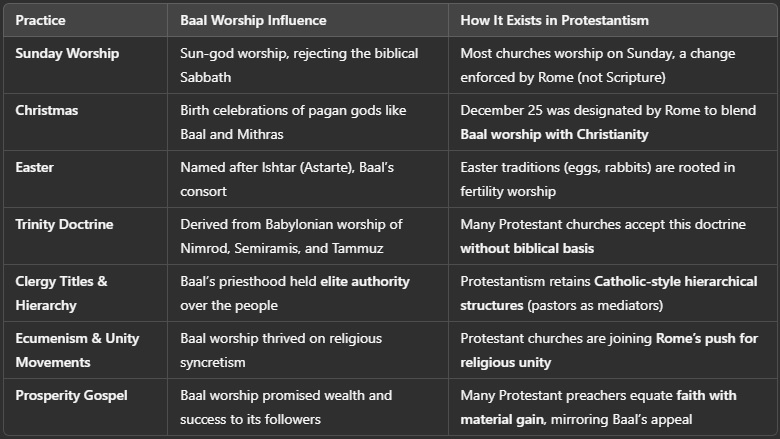
The Protestant Drift Toward Rome
Rejection of the Biblical Sabbath – Sunday worship is a mandate from Rome, not found in Scripture.
Pagan Holiday Observances – Churches embrace Christmas, Easter, and other Roman-introduced feasts, even when rooted in Baal worship.
Acceptance of the Vatican’s Leadership – Many Protestant leaders openly support the Pope’s authority, fulfilling Revelation 13’s prophecy about the world following the beast.
Revelation 18:4 warns believers to come out of spiritual Babylon. Protestant churches that continue adopting Rome’s Baal-based traditions are walking the same dangerous path Israel did.
⚠️A Final Warning: The Point of No Return
We are at a moment of decision—a crossroad between truth and deception. The infiltration of False worship is not a relic of the past; it is alive, disguised in religious traditions, church doctrines, and global movements that pull believers away from pure biblical faith.
Every person must choose—follow God’s Word completely or remain entangled in Babylon’s system. The time for compromise has ended.
Now is the moment to realign our faith with the unshakable truth of Scripture.
Hosea 4:6 – “My people are destroyed for lack of knowledge: because thou hast rejected knowledge, I will also reject thee.”

